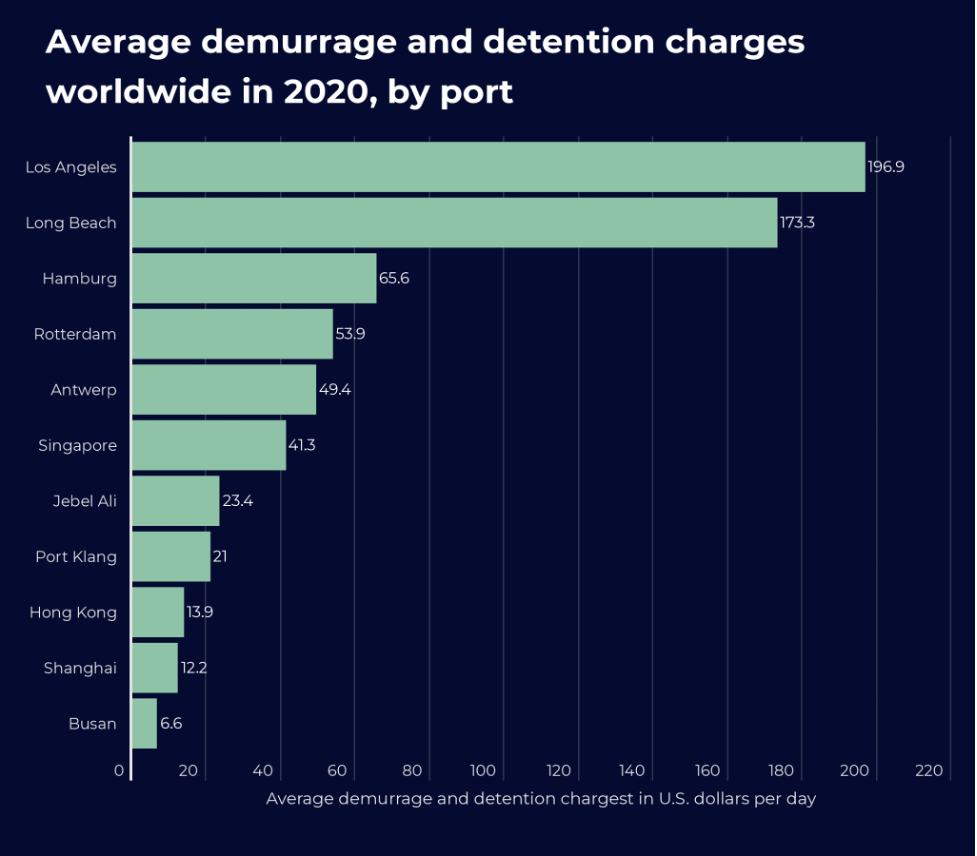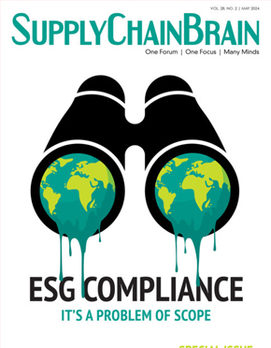
Two years of logistics logjams have burdened ocean shippers with costly increases in demurrage, detention and storage fees.
These are extra costs levied on top of often-punishing freight rates, designed to penalize cargo owners for delays that aren’t always their fault.
There are, however, steps that can be taken to expedite cargo delivery and avoid or minimize demurrage, detention and storage fees.
Demurrage refers to the charge that the merchant or cargo owner pays for the use of the container within the terminal beyond the free time period. Detention is what the merchant or cargo owner pays for the use of the container outside of the terminal or depot, beyond the free time period. And storage fees are levied on cargoes when they’re in waterway or inland terminals.
The definition of time allowed depends on the small print of each contract, so the first thing to do is determine much time you get for free. In general, the standard time is four to five days, but it’s important to check this detail before embarking on any cargo voyage. After the time has expired, you’ll be charged a daily demurrage fee until the cargo has been removed from the terminal.
The price a shipper pays differs depending on the terminal or carrier. Daily demurrage can range from $75 to $150 per container per day, but that’s ordinarily just for the first five days or so. The longer the cargo stays in the terminal beyond the original amount of time allocated, the more the cargo owner needs to pay to have the cargo released.

At the height of the logistics crisis, members of the Harbor Trucking Association, Agriculture Transportation Coalition, and Pacific Coast Council of Freight Forwarders and Customs Brokers inundated the Federal Maritime Commission with complaints about demurrage fees that reached as high as $100 million at the ports of Los Angeles and Long Beach, and $50 million at New York/New Jersey, in late 2020 alone.
During the logjam in U.S. ports in 2020 and 2021, the levying and payment of these fees became central to a host of legal disputes between shippers and carriers about the timely release of cargoes stuck in congested ports. Following are some common reasons for the delays:
- A commercial or legal dispute between shipper and consignee,
- Documents weren’t delivered to the consignee in time to expedite Customs clearance,
- Incorrect or insufficient documentation received by the consignee,
- Customs inspections that took longer than expected,
- Poor communications regarding estimated time of arrival of the cargo,
- The cargo owner lacked the funds required to clear the container,
- Cargo received differed from that outlined in the original sales order,
- A lack of necessary equipment like chassis to discharge cargoes, and
- Poor communication between the shipping line and shippers regarding arrivals.
While the shipping lines, truckers and terminal operators might be responsible for these delays, the onus of demurrage and settlement of the same falls upon the consignee or cargo owner. At times of supply chain disruption, costly demurrage and detention fees make it extra important to be able to track and trace containers.
If you’re a first-time importer, it pays to do your homework before signing any contract with a shipping line or non-vessel operating common carrier (NVO) to avoid any surprises on arrival at final destination. Following are six ways to avoid demurrage and detention fees:
- Do your research and be sure that you’ll be able to comply with the number of free days outlined in the contract. Speak to shippers, freight forwarders and customs brokers to understand how long it normally takes to process a container.
- Make sure you understand whether there are any special requirements for your cargo. Find a good customs broker to advise you on this.
- If you know that your cargo requires special permissions (such as for food products or hazardous chemicals), you should negotiate extra free days with the shipping line to create space for any possible delays.
- Ensure that you work with a shipping line or freight forwarder that’s able to track and trace your container, and offers real-time data on the availability of your cargo. Shipping lines generally don’t accept liability for the non-notification of your cargo’s arrival.
- Choose to work with a shipping line or freight forwarder that has tools offering real-time predictive data visibility and analytics, to help identify and mitigate issues instead of reacting to disruptions after they happen.
- Share cargo and shipment delivery instructions in advance with all parties, including the carrier, vendors and third-party providers, for a smooth loading and unloading process, and to avoid any delays.
With track-and-trace technologies and real-time predictive data visibility and analytics, stakeholders can proactively identify and mitigate issues. Instead of the need to gather information from various sources, data is automatically collected, processed and turned into usable insights. Instead of reviewing performance after an event, cargo owners are evaluating and analyzing reports generated based on exhaustive data, and in the process being proactive. This greatly mitigates the risk of incurring demurrage and detention fees.
At any given point, cargo owners, shippers, managers, forwarders, and cargo owners need information about various data points, including:
- Where inventory is at any given time,
- Condition of inventory after any transfers, and
- Readiness for inefficiencies and bottlenecks that might pop up.
Without real-time predictive visibility into these factors, shippers may remain unaware of the position of their freight. A tool that provides not only real-time visibility but also has the predictive ability to address major roadblocks can help achieve these goals. In the process, stakeholders can gain a competitive edge and avoid high demurrage charges.
Shailesh Gupta is chief of staff with Portcast.



.jpg?height=100&t=1715228265&width=150)
.jpg?height=100&t=1715141311&width=150)


